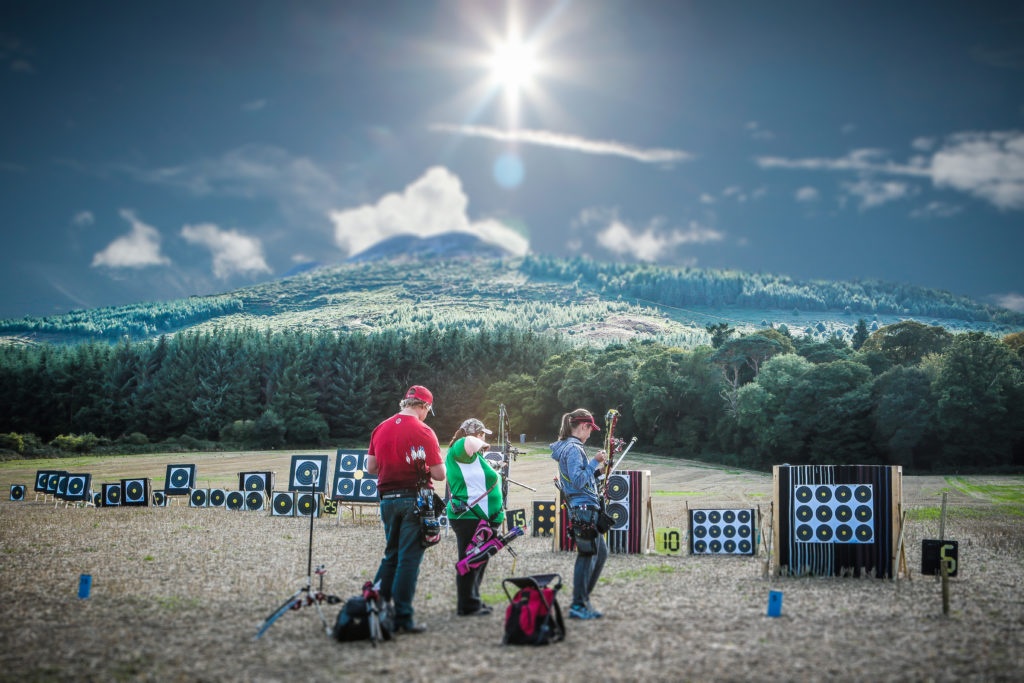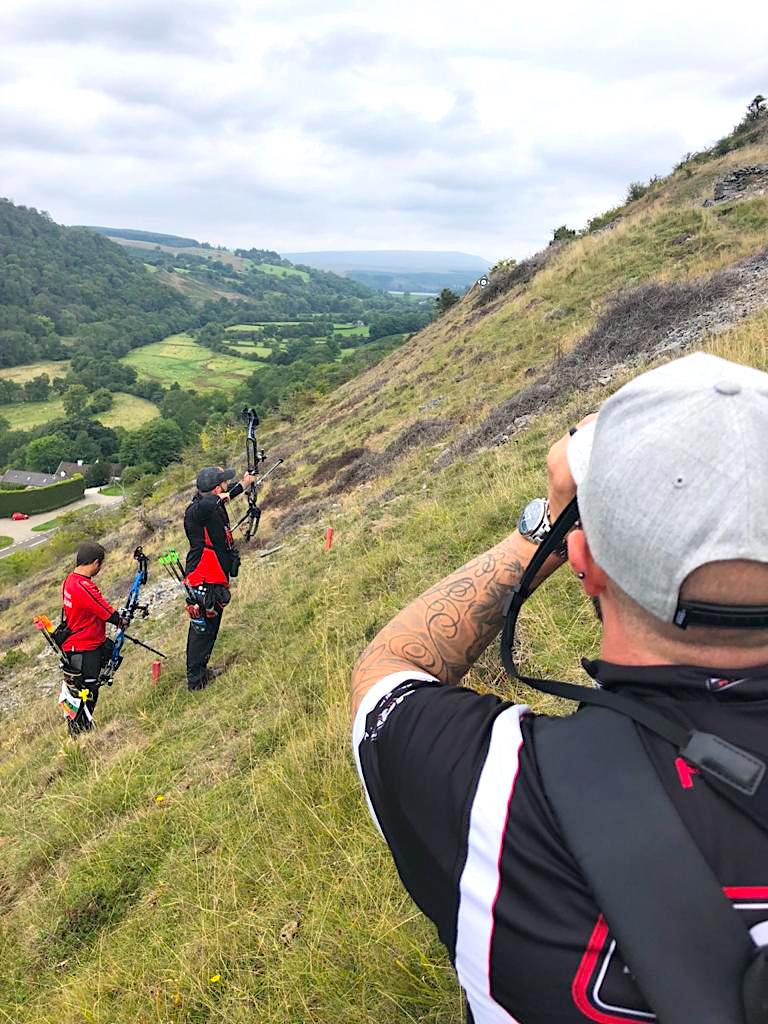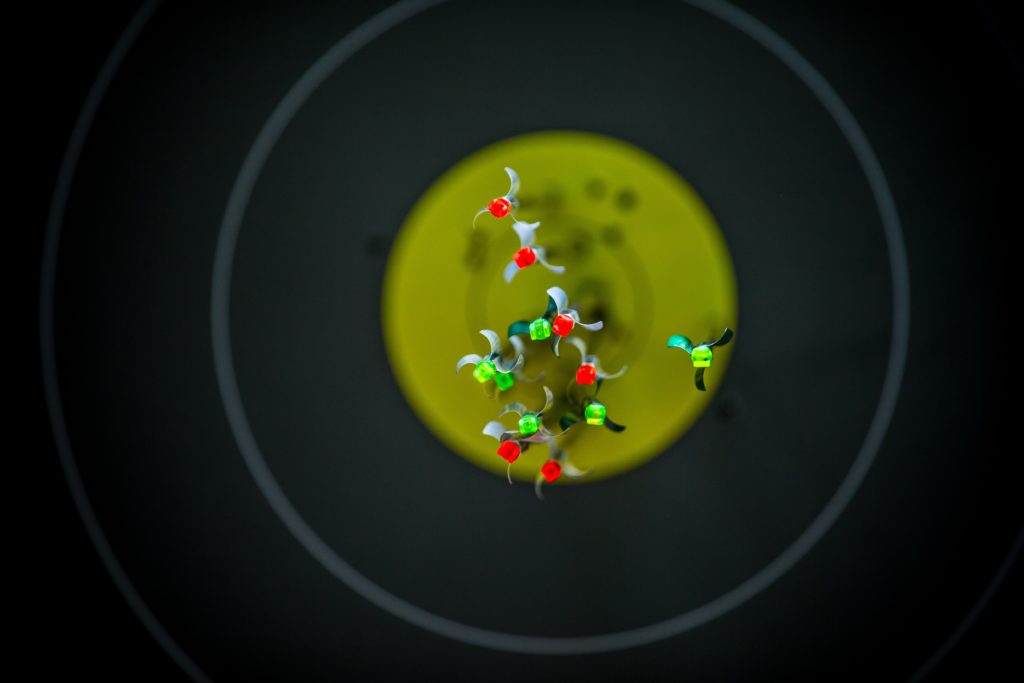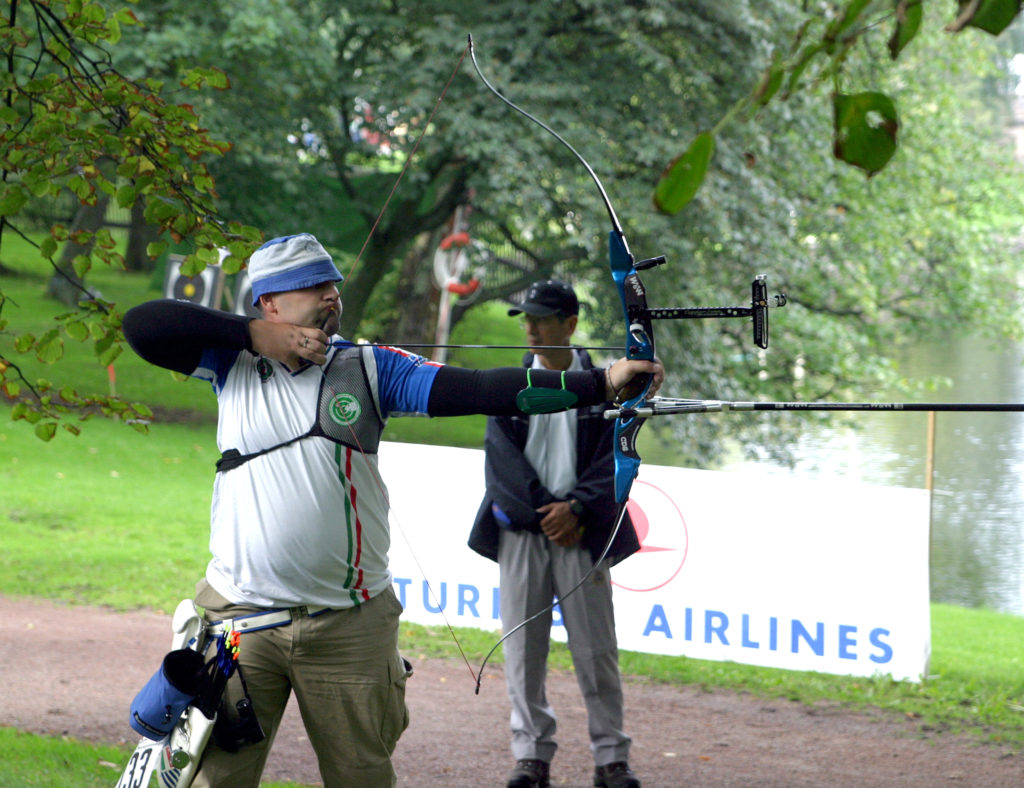Dr James Park takes us out there
Target archery is usually conducted outdoors on large fields, exposed to the weather. Consequently, minimising the distance an arrow drifts in wind is important. To do that, it is best to use small-diameter, high-mass arrows. Easton Protours or X10s are a good choice.
Field archery is a little different. We change target distance every three shots, the terrain will probably not be flat and sometimes we will not be told the target distance. While some field courses provide reasonable protection from wind, others do not. Though we can just take our target archery-optimised gear to the field course and do reasonably well – and many archers do just that – we can do better if we optimise it for the differences.
First, I will consider the ever-changing target distance. For a World Archery field course, shot from the red pegs, the target distance varies between 10m and 60m. Once we are on the course, there are no practice shots – the first arrow at every target is a scoring arrow. Consequently, it is very important that you have accurate sight settings. While you can go to every distance on the target range, shoot an end and mark the setting, that is nowhere near good enough if you want high scores.
The best way to obtain good sight settings is to use one of the computer applications. I use my own application, naturally enough – it is Accurate Sights, available from Pats Archery (pats-archery.com). Accurate Sights uses the settings for a short distance (for example, 10m) and a long distance (for example, 60m) together with the distance from the archer’s eye to the sight and eye to arrow for recurve bows or from the peep to the sight and peep to the arrow for compound bows, to calculate the settings for all distances.
So long as those two settings are accurate, all the others will also be accurate. Note that in this process it is important to take a lot of care with the setting for the short distance especially. Accurate Sights also calculates the sight settings required for shooting up or down hills.
When I feel especially enthusiastic, I get those two sight settings using my shooting machine prior to using the application. Then I can be very confident indeed that all my settings will be accurate.
Secondly, we might not know the exact target distance. For example, on a marked distance course, the distance tolerance is ±1m. On an unmarked distance course, the archer needs to estimate the target distance, and while that can be done very well, there are nevertheless potential errors of perhaps several metres at the longer target distances.
When shooting either up or down hill, the required sight setting is different to the setting required on the target range. In almost all cases, the sight needs to move higher up the sight bar. The correction for downhill is greater than for uphill (note that it is not just the effective horizontal distance, as is often assumed – that is only a rough approximation). This introduces additional uncertainty in the required sight setting.
A higher arrow speed minimises score loss due to distance errors. Consequently, assuming they group equally well, arrows that have a higher average speed over the target distance provide an advantage. I have analysed this extensively, and ACE or similar arrows will be the best. ACEs have the lowest mass for a given stiffness and a reasonably small diameter. While we can usually expect less wind than on the target range, the ACE’s small diameter helps reduce drift when it is windy.
For example, with my recurve bow, I use X10s, size 600 with 120-grain points, on the target range. That gives me the least wind drift. Their mass is 328 grains and I get an arrow speed of 190ft/s. I can use them for field as well, but there is a better choice. An ACE, size 670 with 70-grain point, has a mass of 254 grains and gives me an arrow speed of 219ft/s.
Changing from the X10s to the ACEs reduces the gap between my 20m and 70m sight settings from 74mm to 57mm. I selected the arrows very carefully, and to change between them, all I do is use a different pressure button – I do not need to change the bow’s draw force.
I have examined the use of large-diameter arrows to increase the likelihood of touching score lines, but even for short targets and light winds, the increase in wind drift is greater than the increase in arrow radius. Hence, I see a disadvantage rather than an advantage.
Remember that it is important to be able to see where your arrows have hit the target. Consequently, I am quite careful to select nock and fletch colours that are visible both in the yellow and black areas of the target face.
Third, we need to make it easy to estimate the distance to unmarked distance targets. Usually, archers use the size of something on the bow in relation to the size of the target face. For example, like most archers, with my compound bow, I use the proportion of the target face that I can see through my scope.
I like to be able to just see the full 80cm target face when I am at 50m (I would also be happy with 48m but, given a choice, I prefer 50m as that gives me less error at the longest unmarked target distances.) Then I will just be able to see the full 60cm face at 37.5m, the full 40cm face at 25m and the full 20cm face at 12.5m. It is then a simple 10% change in distance for each ring more or less than a full face. So, for example, if I can see from the left edge of the 80cm face across to the line between the two and one rings, I know the distance must be 10% less than 50m, so 45m.
Since I like to have my sight extension length set to the distance required to cancel out the effects of any bow torque, and I use a 0.75 dioptre lens, I then need to set the effective lens diameter so that I can just see the full face at 50m. I can do that using an aperture mask on the lens.
Sight dot and third axis
Fourth, I want to make sure I can see my sight dot. It must be a colour that is visible in both the black rings and the yellow rings and when there is not much light. Usually, I find orange is satisfactory.
Fifth, because we will usually be shooting both uphill and downhill, it is necessary to ensure that, for compound bows, the sight’s third axis is set correctly. Otherwise, as we change target elevation, the arrows will move laterally on the target.
While I have a jig to help achieve this on the work bench, it is necessary to test it by shooting at different target elevations, since the variable force from the bow’s cables on the cable guard as the bow is drawn can result in the bow twisting a little, hence disrupting the third axis setting.
So, yes, we can go direct from the target range and do reasonably well on the field course, but we will do better if we make a few carefully considered changes.





